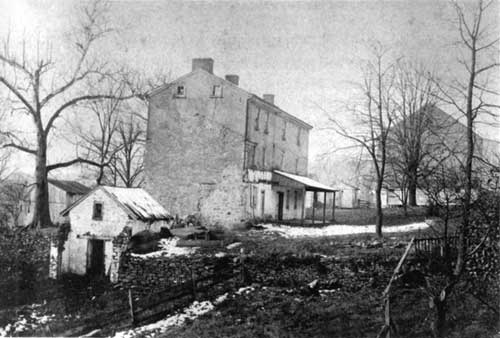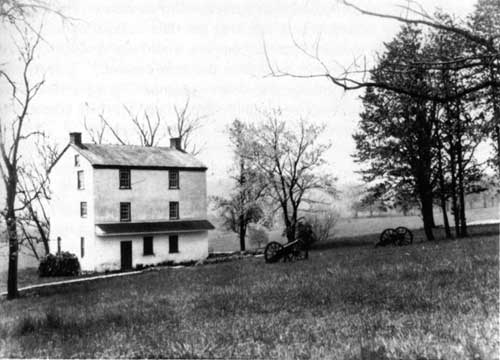|
Valley Forge National Historical Park Chapter 4 |

|
|
CHAPTER FOUR: The Park Commission Triumphs (continued) Valley Forge was criticized during World War I by those who wondered whether the park commission was doing enough for the war effort. Some believed that America needed more than a spiritual lesson from Valley Forge. The importance of sending food to the allies was being emphasized throughout America. Park Commissioner W. H. Sayen wrote Governor Brumbaugh in an attempt to justify the wartime role of the park. Sayen declared that 30 acres of park land were cultivated with food crops, which was as much as the reduced staff at the park could cope with. Sayen complained: "A great many of these people who are attacking the state for not cultivating its public parks, own privately large golf links from one hundred to two hundred acres and on which they propose to enjoy themselves and destroy the pleasure grounds for 80,000 children." [108] Generally speaking, the park commission got on well with Governor Brumbaugh, who proved to be the park's second great friend in Harrisburg. In 1916, the park commission report complimented the governor, saying, "With the present State administration there happily came a Governor who knew Valley Forge, and the Commonwealth is to be congratulated upon the work he made possible by suitable appropriations." [109] During Brumbaugh's term, the park was finally able to resume the growth it had witnessed during Samuel W. Pennypacker's administration. The park commission nearly doubled the size of the park by buying hundreds of acres along Valley Creek plus large tracts contiguous to what it already owned, and it constructed the Camp Road linking Forts Washington and Huntington. In 1918, the park acquired property that included the house that had been General James Mitchell Varnum's headquarters during the winter of 1777—1778. The house was a three-bay, two-story stone structure with a hall-and-parlor interior plan typical of the Delaware Valley during the beginning of the eighteenth century. Probably built sometime between 1711 and 1735, it became the oldest building in the park. Up until 1898, it had been the residence of the Stephens family, but in the early twentieth century it was falling into ruin. The commission considered it an important acquisition but recognized that its restoration would be expensive. Commissioners were able to get the Philadelphia Chapter of the DAR to renovate and preserve the house and install a caretaker there. [110]
Several other acquisitions reveal an unconscious pattern in the development of the park during the first quarter-century of its existence. Since the time of the encampment, the valley had been an industrial setting. By 1920, the park commission had driven away most of the remaining industries from the villages of Port Kennedy and Valley Forge. Port Kennedy's Ehret Magnesia Company was among the businesses that fell victim to the park. As the park expanded during Brumbaugh's administration, it acquired land with dwellings where some of this company's employees were living. During World War I, Ehret was manufacturing a product the navy needed for the war effort, so the park commission allowed Ehret's employees to continue occupying their homes. After the war was over, the park commission heard rumors that Ehret would spend some $100,000 on new workers' dwellings plus other improvements on its land adjoining the park. The park commission planned to acquire this property eventually and did not want to spend an additional $100,000 for it. The Ehret Magnesia Company was asked for information but refused to cooperate. The commission retaliated by immediately designating the tract in question as a future portion of the park, meaning that the company would not be able to recover the costs of any improvements made from that time onward. [111] This stymied the company's plans to enlarge their own operations during a time when many of America's businesses were rapidly expanding. The park commission saw nothing wrong with this state of affairs and flatly declared:
At the western end of the campground, another business came into conflict with the park commission. The commission condemned land on the southwest side of today's intersection of Routes 23 and 252. Thomas and Anna Cutler owned the land, but they had leased a mill there to one Ebenezer Lund, who operated a business called the Valley Forge Worsted Mills. The park commission planned to allow Lund to operate until his lease ran out, after which they wanted to tear the old mill down. Lund complained of being "tied hand and foot by your commission," unable to make needed repairs at the factory because he would not be able to recover the cost of these improvements from the state. [113] The park commission offered no help, so Lund went to court and was awarded $31,500 for damages sustained in the confiscation of his leasehold. He informed the park that he would be clearing out as soon as he could move his machinery. [114] In an undated memo on Valley Forge Worsted Mills stationery, Lund expressed his anger. The park, he charged, had ruined Valley Forge for business. An entrepreneur could not even offer secure employment. "Labor will only stay long enough to get learnt and until they can get another position." When all the valley's businesses were gone, he guessed, the last of its residents would move too, since people could not "eat their houses." [115] Valley Forge would become a dead place. Indeed, the closing of Lund's operation indeed marked the end of viable industry at Valley Forge. The park commissioners would have liked to improve Valley Forge even more by curtailing what they deemed other objectionable commercial operations on property belonging to the Washington Inn. The inn kept hogs penned up not 300 feet from the headquarters building. The park superintendent wrote: "The odor from this piggery is very objectionable and we believe unwholesome to those who are obliged to be on the ground continuously." [116] The Washington Inn also had a cesspool that overflowed. Happily feeding around the grounds were chickens, which became the main course at the hotel's popular chicken-and-waffle dinners. [117] It would, however, be many years until the park commission could acquire the property of the Washington Inn and make that too blend in with the scenery being created at Valley Forge. In the first two decades of the twentieth century, as they acquired the bulk of the land on which Washington's soldiers had camped, the park commissioners did their best to preserve and maintain all structures deemed to be of colonial or Revolutionary origin—the structures that would have existed when the Continental army was here. Surrounding those structures, the commissioners fostered the creation of an attractively landscaped memorial park that had markers indicating what was no longer visible to the tourist. Other markers, such as the Wayne statue and the National Memorial Arch, were meant to inspire awe and instill pride in the visitor. A revitalized park commission had managed to fend off the threat of a national park and sweep away the competitive Centennial and Memorial Association. It received little criticism for this, or for the fact that it was killing the businesses that fed two communities. What criticism the park did receive centered on how it was going about its program, not about the park commission's overall plan. Local resident E. B. Cassatt complained about the park guard who would not let him and his wife ride horseback over certain park trails. [118] He criticized the park's landscaping, observing that their vistas were three times as broad as they needed to be and were inappropriate because they had certainly not been there during the winter of 1777—1778. In addition, Cassatt charged, the Wayne statue had been "disfigured" when park employees cut down the woods that had crowned the little knoll on which it stood. [119] In the same period, there was a parallel controversy about who would interpret the message of Valley Forge. For years, park administrators had had to contend with Bernard McMenamin, better known as "Barney the Guide," who picked up odd dollars by escorting visitors who wanted to see Valley Forge's points of interest. [120] One visitor wrote a park superintendent about another unofficial guide who liked to plant himself at the top of the observation tower and solicit contributions after reciting a spiel on Valley Forge: "The principal thing noteworthy in the young man's talk was his bad grammer [sic]." [121] But the park commission would discover it had much more serious competition in the Rev. Dr. W. Herbert Burk, a clergyman from Norristown who had acquired property well east of what was then the park and who had some very definite ideas about what visitors to Valley Forge needed to know. |
|
| ||
| <<< PREVIOUS | CONTENTS | NEXT >>> |
|
Valley Forge ©1995, The Pennsylvania State University Press treese/treese4e.htm — 02-Apr-2002 | ||

